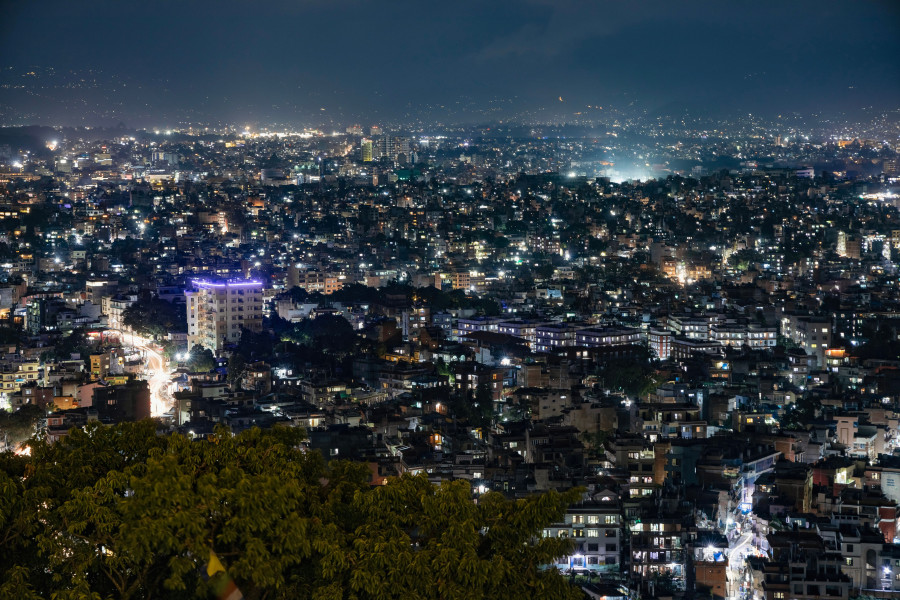Money
Denizens troubled as demand surge strains Kathmandu’s poor electricity grid
The power utility has not been able to reinforce the decades-old infrastructures.
Prahlad Rijal
Sunil Thakur is a 23-year-old barber who runs a saloon in the recently developed town of Kageshwari-Manohara on the eastern outskirts of Kathmandu. For the past week, Thakur has been forced to shut his shop before the end of business hours because of frequent and troubling power outages.
“I have lost business as I am not able to run the shop after five in the evening due to poor voltage and frequent power cuts,” said Thakur. “Just three weeks ago, the whole area suffered outages for two days and when we called the power utility, we were told that there was some problem in the distribution system.”
The two-day long outage was caused by a cable snap in the Bhaktapur substation, kilometres away from Kageshwari, which led to a complete shutdown of distribution feeders in Gothatar and Danchi, the supply points in the region, according to the power utility.
“Despite them fixing the problem, the voltage has been fluctuating and outages are frequent,” said Thakur.
That is just one instance and not only Thakur but scores of businesses and households from all over the Valley have been troubled by frequent electricity cuts, voltage fluctuations as a surge in power demand has revealed the cracks in the Valley’s decades-old and poor distribution infrastructure.
“Over the past few weeks, Kathmandu’s power demand has escalated by a massive 40 percent, from usual demand of 285 megawatts to 400 megawatts putting extreme pressure in the lean distribution system of the Valley,” said Suresh Bahadur Bhattarai, chief of the Load Dispatch Centre.
According to Bhattarai, a minor escalation in the power demand could make the grid go haywire as the centre has been critically managing the network which stretches far up to the settlements of Banepa and Panchkhal.
The cities of Biratnagar, Janakpur and Attariya which are significantly less populated than Kathmandu have nearly twice the number of distribution substations that regulate power flow and the power utility has not been able to take more than interim measures in Kathmandu to strengthen the distribution infrastructure.
A fall in temperature coupled with an upsurge in electricity consumption during winter has led to the breakdown of multiple low capacity power feeders and electric wires and the power utility has only been replacing such equipment whenever the need arises rather than adding more to ensure a smooth and reliable flow of power.
As per electricity authority, the number of distribution transformers in Kathmandu stands at 6,391 and for safety issues, it can only flow power at a maximum of 60 percent capacity of the transformers. Officials also say that is just half the number of transformers that the Valley requires for effective power management.
“There is a need to carry out a major overhaul of the distribution system in Kathmandu and add more equipment as the feeders which are already overloaded in the present setup and capacity will not be able to fulfill the increasing demand,” said Kulman Ghising, managing director of the Nepal Electricity Authority. “As the distribution infrastructure in Kathmandu also routes power to Bhaktapur and Lalitpur through 66kv Syuchatar-Patan-Baneshwar based setups, the load can only be managed if we are allowed to build the Thankot-Chapagaun-Bhaktapur transmission line.”
The Nepal Electricity Authority’s plan to complete the decades-old 132 kV Thankot-Chapagaun-Bhaktapur Transmission Line Project has met with opposition from the locals of Khokana, Bungamati, Harisidhhi and Lamatar, who say the power utility must realign the high tension lines and payout 100 percent compensation to curb social costs.
The problem is not only limited to the Thankot transmission line but, officials say the rapid pace of unmanaged housing development in the Valley over the years and resistance from denizens to allow power utility add more transformers near their homes and plots has worsened the situation.
“It is true that the Valley has decades-old electricity infrastructure and as more settlements rapidly developed, authorities did nothing more than just pull cables over new settlements without any long-term assessments and visions,” said Prabal Adhikari, spokesperson of Nepal Electricity Authority. “At a time when we are planning to add more transformers, we get applications to remove and relocate the existing transformers so that the applicants can sell the land for higher value, that is how complicated the situation is.”
According to Adhikari, the temporary measures will not correct the critical situation which if intensifies, will lead to a power network failure and both locals and other stakeholders must understand that, come on-board and help the power utility to add more equipment and transmission lines.
Amid this, the power utility has begun studying the possibility of building a transmission ring around the river corridors of Kathmandu in a bid to reduce transmission distance and strengthen the infrastructure but it will take years for the plan to materialise.




 16.12°C Kathmandu
16.12°C Kathmandu














